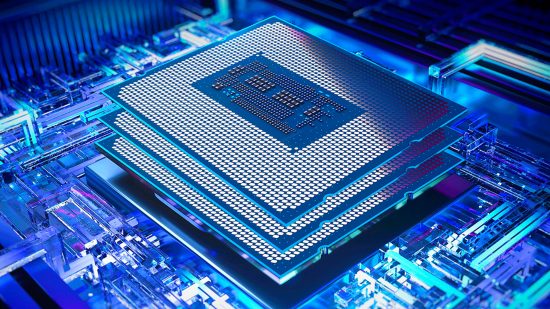The silicon wizards at Intel are already working on ways to create a 3D silicon stack that includes cache for future processors, according to CEO Pat Gelsinger. This Intel 3D cache news follows AMD’s use of TSMC’s 3D silicon stacking technique in its X3D CPUs with AMD 3D V-Cache, which has enabled the company to pack loads more cache into its CPUs, substantially boosting gaming performance.
However, Gelsinger was keen to distance Intel from AMD’s approach to 3D stacking, saying that Intel is developing its own technique, and producing the silicon in-house. Comparatively, AMD took advantage of TSMC’s already existing ability to stack silicon with its SoIC tech, in order to make its X3D CPUs such as the AMD Ryzen 7 7800X3D.
During a Q&A session at Intel’s Innovation 2023 event, Gelsinger was asked whether Intel planned to adopt a technology like 3D V-Cache. ‘When you reference V-Cache, you’re talking about a very specific technology that TSMC does with some of its customers as well,’ he replied. ‘Obviously, we’re doing that differently in our composition, right?’
The session was attended by Tom’s Hardware, which has transcribed the quotes. ‘That particular type of technology isn’t something that’s part of Meteor Lake,’ said Gelsinger, ‘but in our roadmap, you’re seeing the idea of 3D silicon where we’ll have cache on one die, and we’ll have CPU compute on the stacked die on top of it, and obviously using EMIB that Foveros [sic] we’ll be able to compose different capabilities.’

EMIB is Intel’s embedded multi-die interconnect bridge, which enables the tiles of its new CPUs to communicate with each other quickly, while Foveros is the name of Intel’s own 3D silicon stacking tech. What’s interesting here is that Intel is stacking a compute die on top of the cache. In contrast, AMD stacks the cache on top of one of the main CPU chiplets in its current Ryzen X3D CPUs.
‘We feel very good that we have advanced capabilities for next-generation memory architectures, advantages for 3D stacking, for both little die, as well as for very big packages for AI and high-performance servers as well,’ continued Gelsinger.
3D V-Cache has done wonders for the gaming performance of AMD’s latest CPUs, despite their comparative lack of clock speed, as it enables AMD to stuff the CPUs with cache. The last-gen Ryzen 7 5800X3D first introduced the tech, and that’s continued with the new Ryzen 7 7800X3D, which is currently listed as our overall best gaming CPU, despite its comparative lack of clock speed.
It’s no surprise to see that Intel is stacking silicon dies, as it first announced its Foveros manufacturing technique two years ago, but it’s interesting that cache is now specifically mentioned. Maybe Intel will be the king of gaming CPUs in the years to come.
Are you excited by the prospect of a cached-up Intel gaming CPU? Let us know your thoughts on the Custom PC Facebook page, via Twitter, or join our Custom PC and Gaming Setup Facebook group and tap into the knowledge of our 420,000+ members.
